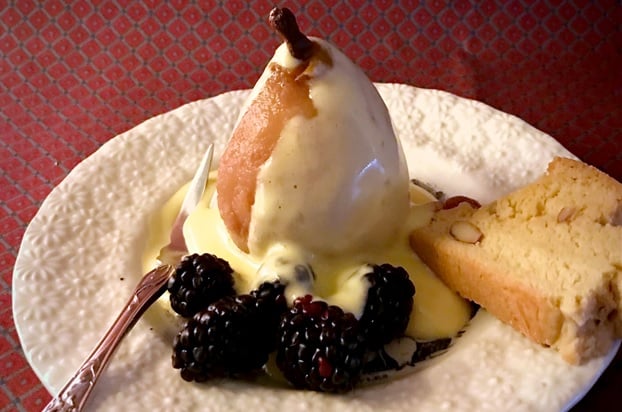Zabaglione, with three ingredients, often made tableside in restaurants, is simplicity itself. The Italian frothy dessert is made from whipping together egg yolks, sugar and sweet Marsala wine over a moderate heat until foamy and thick, and often served over fresh fruit, or on its own with sweet biscuits. Historically it quivered between a custard and a sauce depending on how it was prepared and served. It was deemed especially beneficial for pregnant women and the sick, perhaps because of its gentle nature.
There is a recipe for zabaglione in the manuscript Cuoco Napoletano in the collection at the Morgan Library (New York city) that dates to the 15th century; and the formulation was said to be well established in Tuscany, and to be popular in the court of Caterina de’ Medici in the 16th century. Sabayon is how it was listed in the codification of French sauces in the 19th century. In Argentina, where exists a large Italian population, it is called sambayón.
A special long handled, round bottom, un-tinned copper pan is made for the sole purpose of making zabaglione. In a 1981 New York Times article, Chef Pierre Franey praised this utensil for its beauty, and allowed that although it would “be used infrequently… (it) has the advantage of looking fine hanging in my kitchen.” In those days $11.98, currently $190.

